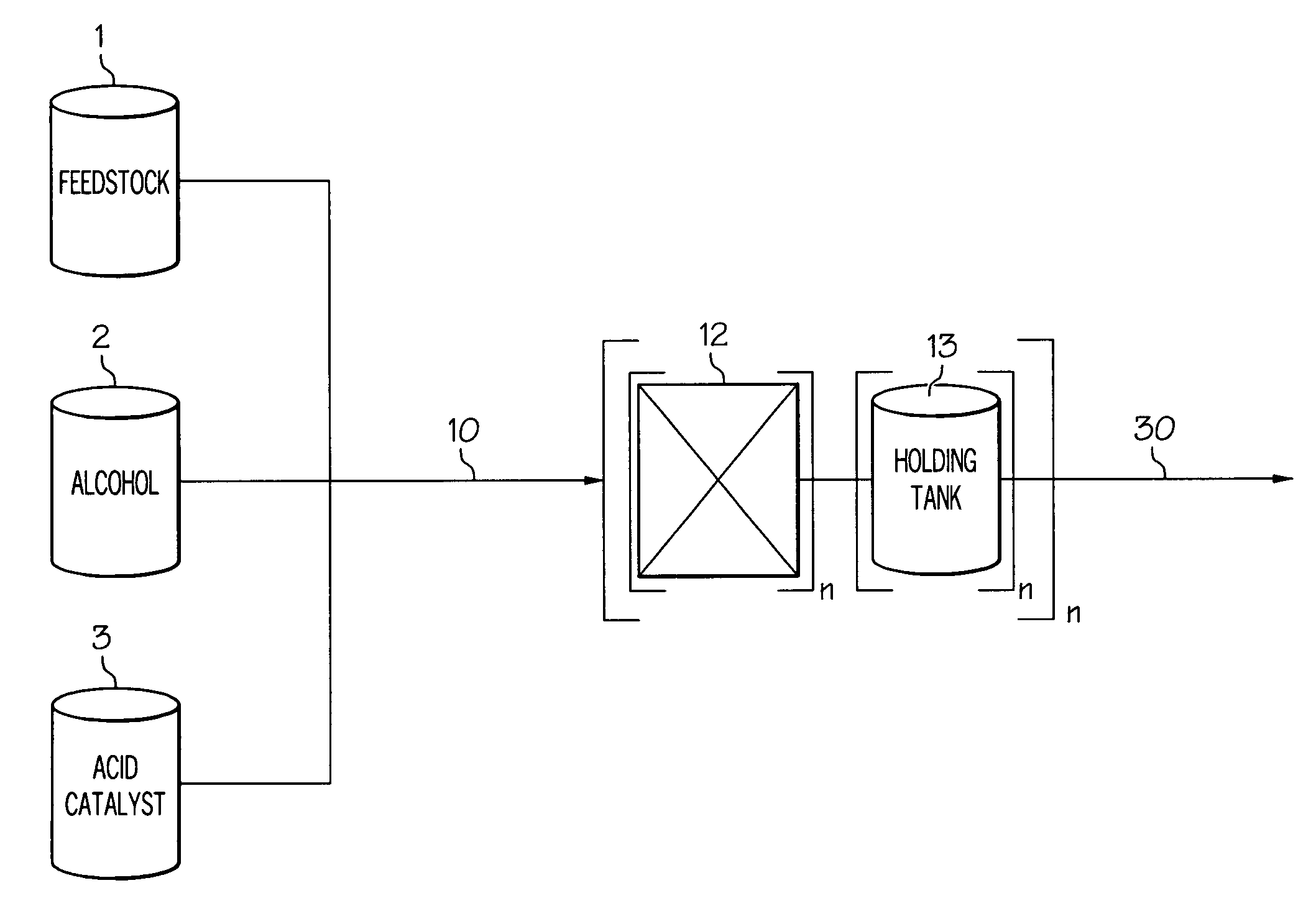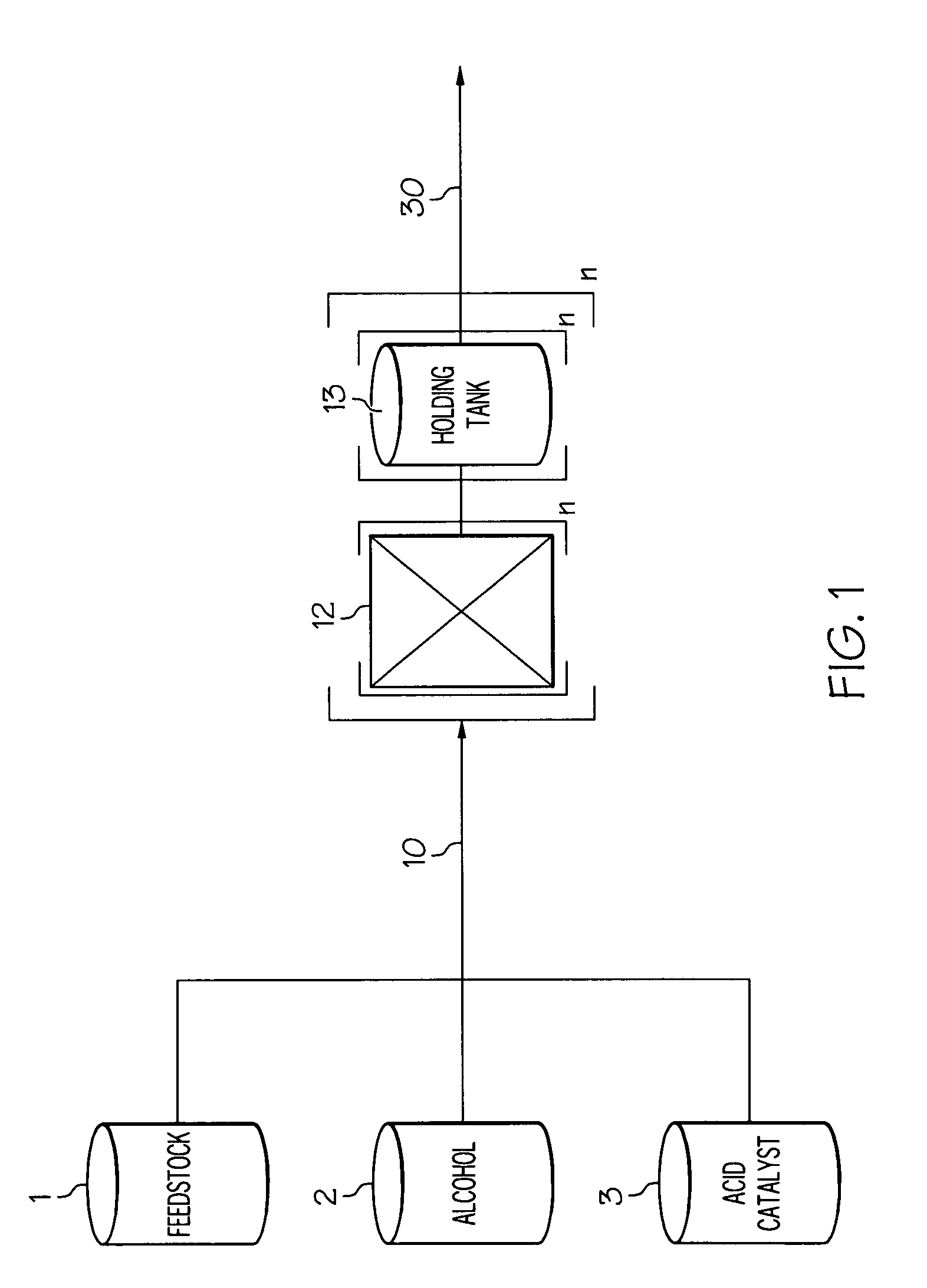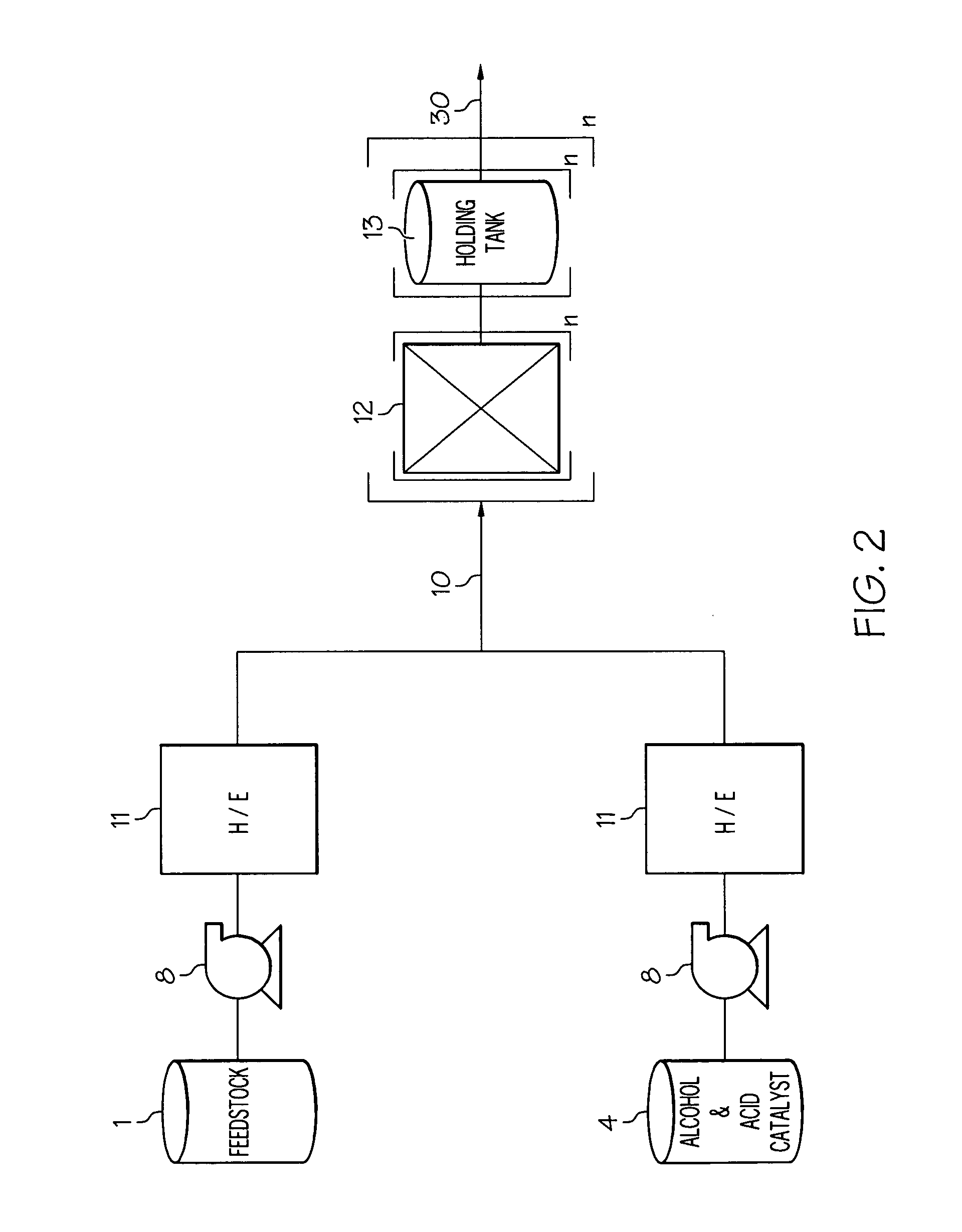Method for reducing free fatty acid content of biodiesel feedstock
a biodiesel feedstock and free fatty acid technology, applied in the field of esterification of free fatty acids, can solve the problems of low yield of biodiesel, low free fatty acid content of feedstock, and inability to produce biodiesel fuel, so as to and reduce the free fatty acid content of feedstock
- Summary
- Abstract
- Description
- Claims
- Application Information
AI Technical Summary
Benefits of technology
Problems solved by technology
Method used
Image
Examples
example 1
[0040]A reaction mixture was prepared by combining the reactants from two holding tanks. The first holding tank contained feedstock having a free fatty acid content, palmitic acid, of 12% by weight in a mixture with degummed soybean oil. The second holding tank contained a mixture of methanol and sulfuric acid. The reaction mixture contained 1% sulfuric acid by weight of the feedstock and 96% methanol by weight of the total mixture. The mixture was passed through six cavitation apparatuses and three holding tanks in series, in an arrangement as shown in FIG. 4. More specifically, six cavitation apparatuses are arranged in series with each other while a holding tank is placed in series after every two cavitation apparatuses. The result of the run is shown in Table 1 below. All reactants were maintained at 124° C. while the initial cavitation occurred at 117° C., and the holding tanks maintained the reaction mixture at 120° C. The reaction stream moved through the apparatuses at a flo...
example 2
[0041]A reaction mixture was prepared by combining the reactants from two holding tanks. The first holding tank contained a feedstock, grease, with free fatty acid, oleic acid, at 3.8% by weight by titration according to AOCS method CA 5a-40. The second holding tank contained methanol and sulfuric acid. The reaction mixture contained 0.5% sulfuric acid by weight of the feedstock and 97% methanol by weight of the total mixture. The mixture was then run through six cavitation apparatuses and three holding tanks in series. More specifically, six cavitation apparatuses are arranged in series with each other while a holding tank is placed in series after every two cavitation apparatuses. The result of the run is shown in Table 1 below. All reactants were maintained at 119° C. while the initial cavitation occurred at 113° C., and the holding tanks maintained the reaction mixture at 110° C. The reaction stream moved through the apparatuses at a flow rate of 0.63 lpm. The orifice diameters ...
example 3
[0042]A reaction mixture was prepared by combining the reactants from two holding tanks. The first holding tank contained a feedstock of pit grease with free fatty acid content of 4.03% by weight. The second holding tank contained methanol and sulfuric acid. The reaction mixture contained 1% sulfuric acid by weight of the feedstock and 91.5% methanol by weight of the total mixture. The mixture was then run through six cavitation apparatuses and three holding tanks in series. More specifically, six cavitation apparatuses are arranged in series with each other while a holding tank is placed in series after every two cavitation apparatuses. The result of the run is shown in Table 1 below. All reactants were maintained at 122° C. while the initial cavitation occurred at 113° C., and the holding tanks maintained the reaction mixture at 114° C. The reaction stream moved through the apparatuses at a flow rate of 0.60 lpm. The orifice diameters of the six cavitation apparatuses varied from ...
PUM
| Property | Measurement | Unit |
|---|---|---|
| pressure | aaaaa | aaaaa |
| temperature | aaaaa | aaaaa |
| pressure | aaaaa | aaaaa |
Abstract
Description
Claims
Application Information
 Login to View More
Login to View More - R&D
- Intellectual Property
- Life Sciences
- Materials
- Tech Scout
- Unparalleled Data Quality
- Higher Quality Content
- 60% Fewer Hallucinations
Browse by: Latest US Patents, China's latest patents, Technical Efficacy Thesaurus, Application Domain, Technology Topic, Popular Technical Reports.
© 2025 PatSnap. All rights reserved.Legal|Privacy policy|Modern Slavery Act Transparency Statement|Sitemap|About US| Contact US: help@patsnap.com



